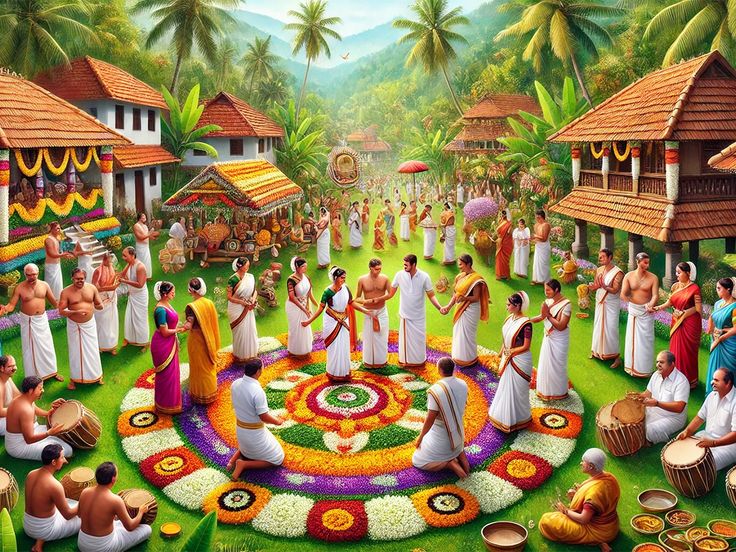Kerala is preparing to welcome Onam 2025, the state’s most cherished festival that blends mythology, cultural pride, and community bonding with modern-day economic vibrance. This year, Onam will be celebrated from August 26 to September 5, with Thiruvonam — the most important day — falling on September 5.
Mythology and Historical Roots
Onam is deeply rooted in the legend of King Mahabali, a benevolent ruler whose reign is remembered as a golden era of prosperity, justice, and equality. According to Hindu mythology, Mahabali was sent to the netherworld by Lord Vishnu in his Vamana avatar, but was granted permission to visit his people once every year. Onam marks this annual homecoming, with Malayalis welcoming their beloved king through rituals, feasts, and festivities.
Ten Days of Festivities
The festival spans ten days, starting with Atham and culminating on Thiruvonam. Each day carries cultural significance:
- Pookkalam (floral carpets) are laid at homes and public spaces, growing in size and design daily.
- Onasadya, the grand vegetarian feast served on banana leaves, remains the highlight, featuring over 20 traditional dishes.
- Vallamkali (snake boat races) add grandeur to rivers and backwaters.
- Folk art forms like Pulikali (tiger dance), Kummattikali (mask dance), and Thiruvathira (women’s dance) showcase Kerala’s artistic heritage.
Onam is celebrated across religious and social lines, making it a unifying cultural identity for Malayalis worldwide.

Economic Significance
Onam is not just a festival of tradition — it is also Kerala’s biggest shopping season. The festive period witnesses a 20–30% surge in retail sales, with markets buzzing with purchases of gold, clothes, home appliances, and automobiles. Advertising spends during Onam in Kerala are projected to cross ₹1,100 crore in 2025, with a significant share moving towards digital platforms such as YouTube and social media.
Government-supported initiatives also add to the festive economy. The Supplyco Onam fairs have already reported sales worth ₹180 crore, catering to over three million customers. Additionally, the Kerala government is distributing six lakh free Onam kits to low-income families, each containing rice, oil, sugar, and spices, ensuring that no household is left out of the celebrations.
Cultural and Social Impact
From villages to cities, Onam transforms Kerala into a stage of vibrant colors and collective joy. Public grounds host cultural competitions, temples organize processions, and families reunite for shared feasts. For the Malayali diaspora across the world, Onam is a nostalgic link to home, celebrated in community centers and cultural halls from the Middle East to the United States.
School Holidays in Kerala
Students across Kerala eagerly look forward to Onam not just for the celebrations but also for the long vacation. In 2025, schools in the state will remain closed from August 27 to September 7, reopening on September 8. This holiday period allows families to travel, participate in community events, and fully immerse in the festive spirit.
A Festival of Unity
Onam’s enduring appeal lies in its inclusivity — it is celebrated by Hindus, Christians, and Muslims alike, making it a symbol of Kerala’s secular ethos. It is not only a religious observance but also a cultural extravaganza that emphasizes community, equality, and sustainability.
In summary, Onam 2025 promises to be a vibrant showcase of Kerala’s heritage. From the myth of Mahabali to the grandeur of boat races, from billion-rupee shopping booms to humble Onam kits, the festival encapsulates the state’s spirit — where tradition and modernity thrive hand in hand. As the golden pookkalams bloom and kitchens prepare for the Onasadya, Kerala once again gears up to welcome its most beloved king and celebrate unity in diversity.












